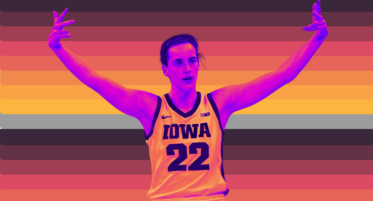Prompt Images
Back in January, Jared Hutchinson wrote a piece about why he believes that The Process will never work; yet in it he demonstrates a fundamental lack of understanding about what The Process truly was. As a rabid fan of the Philadelphia 76ers, basketball analytics, and The Process architect Sam Hinkie, I have a burning desire to explain it to my fellow Sixers fans and help them understand why they’ve gone through so much pain. Why they’d have to watch their team to lose 199 times in only three (3!!!!) seasons.
I didn’t fall in love with The Process because Hinkie was a fan of analytics or because he has a shiny MBA from Stanford (although…). I loved The Process because it was irrefutably the fastest possible way for the Sixers to get back to contending for NBA Championships. And all I ever wanted was a parade down Broad Street.
The Thought Behind The Process
The Process began with an undeniable fact about winning: In order to win a championship in the NBA, you need at least one Hall of Fame caliber player. Don’t believe me? According to basketballreference.com’s Hall of Fame projection model, every NBA champion since 1980 has had a least one player that has made the Hall of Fame (or has a greater than 84 percent chance of eventually making the Hall).
Larry Bird, Moses Malone, Magic Johnson, Michael Jordan, Isiah Thomas, Hakeem Olajuwon, Tim Duncan, Shaquille O’Neal, Kobe Bryant, Chauncey Billups, Kevin Garnett, LeBron James, Dirk Nowitzki, and Steph Curry. Those 14 names cover 37 NBA championships, and almost all of them had another HOFer playing beside them.
Getting a historically great player really matters if you want to win an NBA title.
Now, in order to get that HOF player, you need to either lure him to your team via free agency or draft him. HOF free agents are likely to choose teams that will help them win immediately, will allow them to play in massive media markets, or will provide an extra incentive (think Miami Beach).
In general, HOF free agents will re-sign with their own teams because of the extra years and money that the collective bargaining agreement (CBA) between the NBA and the NBA Players Association allows their original team to offer compared with a competing club. The CBA also guarantees that by far the best financial decision for every star player is—for the first eight or nine years of his career—to play for the team that drafted him. In the history of the NBA, no star player has ever turned down the max 5-year extension to his rookie deal, and it’s likely that no player ever will.
That’s Why the Draft Matters
When Sam Hinkie began The Process, the Sixers did not have a HOF-caliber player. They did not have a team to draw in such a player. They did not have a media market or extra incentive to draw in such a player, unless his top priority was eating amazing cheesesteaks.
So, the best route for the Sixers to get back to a championship is therefore through the drafting of at least one HOF-caliber player, the overwhelming majority of whom are drafted within the top 5 picks. So, the best way for the Sixers to get a HOF-caliber player through the draft was to pick as close to the top of the draft as possible.
Getting into Draft Position
The NBA drafts in such a manner that gives its worst performing teams—the losers—a better chance in getting top draft positions. To do so, lottery balls are drawn for the top three spots every year. Only teams that finish outside of the playoffs are entered into the lottery. The teams with the worst records get the most balls and therefore the best odds of winning.
The worst team in the league only has a 25 percent shot at the #1 pick though, so in order to maximize their chances of picking a potential HOFer, the Sixers had to make sure that they were in the lottery every year, and preferably had as many lottery balls as possible every year. To achieve this goal, the Sixers’ strategy was to lose as much as possible until they drafted a player who could potentially draw free agents and bring a championship to Philadelphia.
That is The Process. That is the entire Process.
The Process was not about using analytics to gain an advantage on the court, as so many of the people who bash it falsely claim, because every single good organization (See: the Spurs, Rockets, Cavs, Warriors) has been doing that for a while already. It was about giving the Sixers’ organization as many chances as possible to come out of the draft with that one player who could turn around the franchise.
Ben Simmons might be that type of player. Joel Embiid is that player when he’s on the floor. If he manages to ever stay healthy, Embiid has a real chance to be a multi-time MVP. He is a piece you can anchor a decade of success on. He could be Philly’s Tim Duncan.
If things fall the right way tonight, the Sixers will be able to add two dynamic young players and create a core that will carry the city for a decade. If not, another team like the Suns or Lakers—who orchestrated the most blatant tank job in NBA history as the season wound down—will be one step closer to finding their HOF-er. No matter what happens though, all these teams have made the smart decision by diving for those lottery balls because they’ve given themselves the best chance of being a true contender in the future, as opposed to a team like the Hawks. No one wants to be the Hawks.
Personal Feelings Don’t Win Championships
Do I like that teams are undeniably rewarded for losing spectacularly? Certainly not. I don’t enjoy watching the Sixers lose all the time, and I hate myself for getting upset when they do manage to win, but I know it is for the best. Until the rewards system in the NBA changes though, this is the best way for me to get that parade. And dammit, I want that parade.



